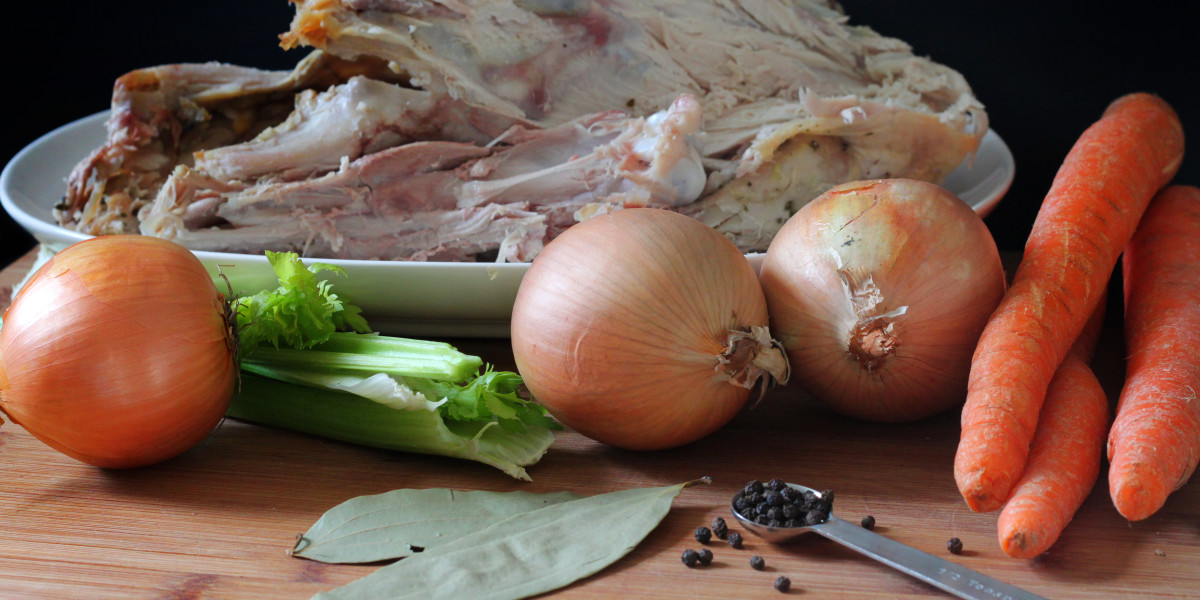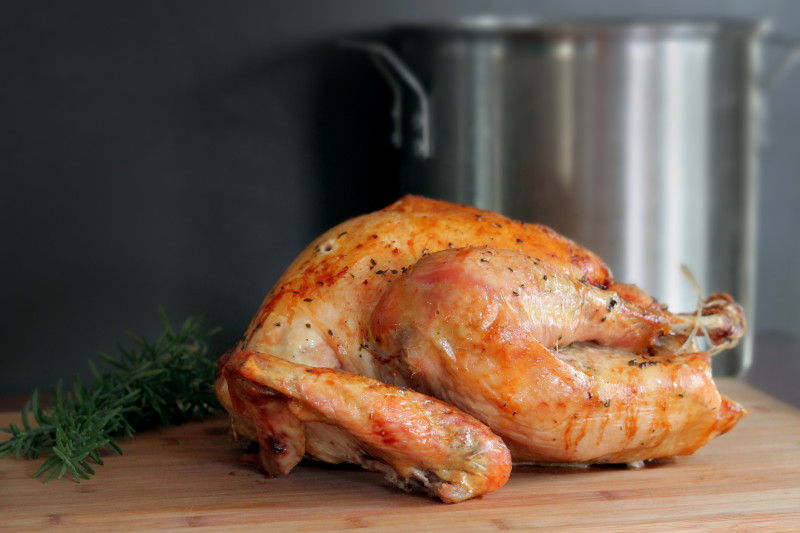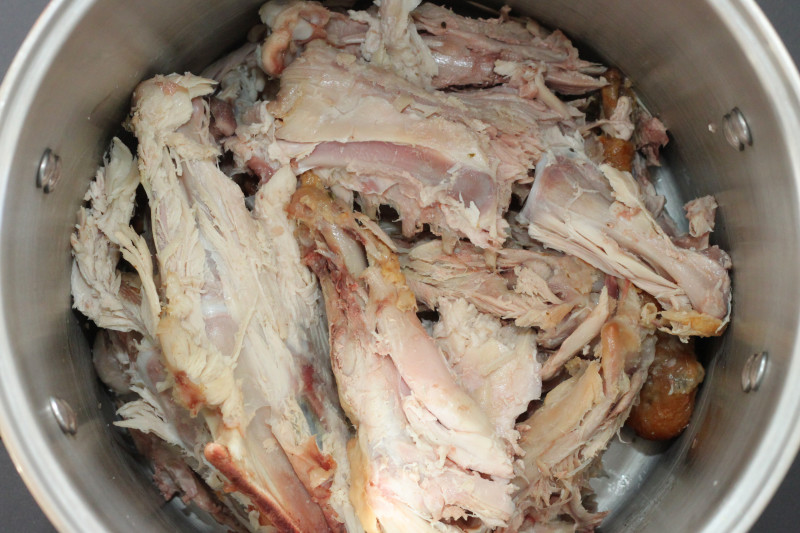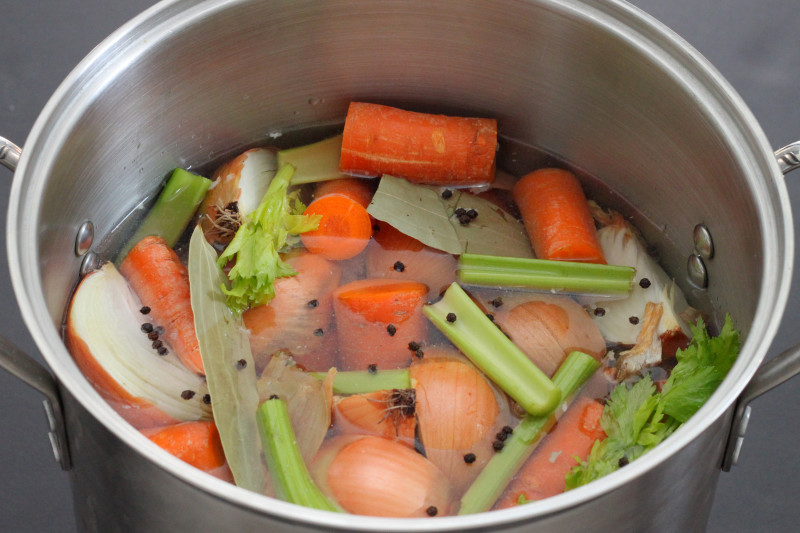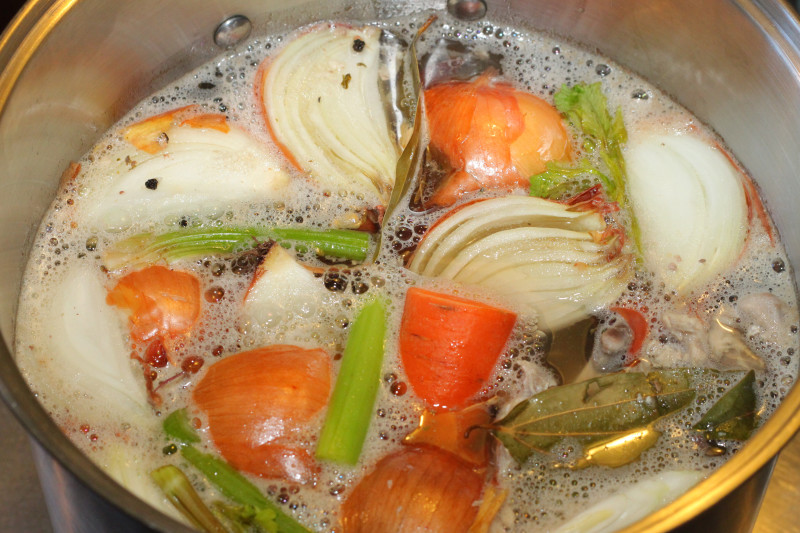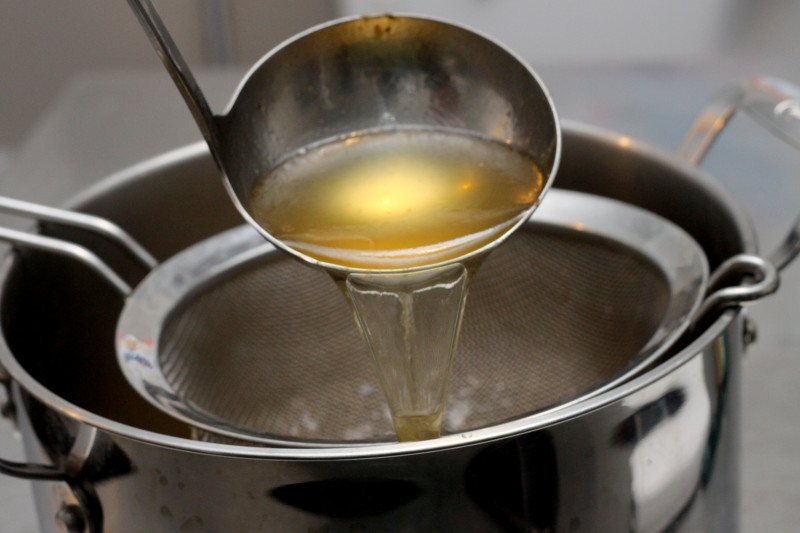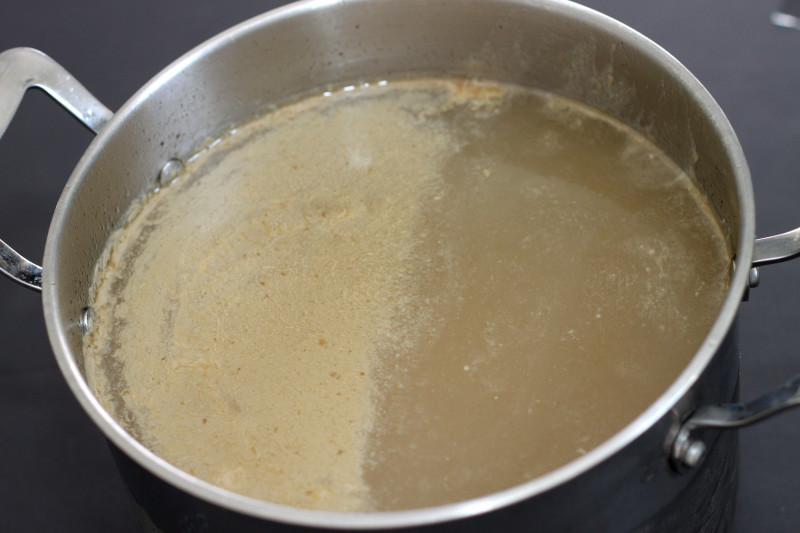This Thanksgiving, hang on to those turkey bones! After the big meal and before the tryptophan sets in, take care to properly refrigerate your leftover turkey. While they may not seem like much, your picked over carcass and leftover bones are the makings of liquid gold, also known as homemade stock.
Flavorful stock is one ingredient that home cooks and distinguished chefs alike rely on to make their meals delicious. Consider how often you use it in your own kitchen: soups, stews, sauces, gravies, poaching, cooking rice, etc. The flavor of homemade can’t be beat. An even better reason to give homemade a try is that you control what goes into it. Remove the fat and skin to reduce the fat, limit the sodium and you have a nutrient-dense stock that is made with whole ingredients — not things like “turkey flavor,” MSG or corn syrup.
Store-bought stock may feel like a time saver, but the hands-on time of making homemade stock is surprisingly short. Onions and carrots get a quick chop and don’t require peeling. Quick, easy and as an added bonus, onion peels help give stock its warm golden color. Stock spends most of its time gently simmering and making your house smell amazing while you go about your day. Once it is finished and ready to refrigerate, you have the base for a delicious soup or an ingredient to add to your meals for months to come. Don’t be surprised if someone asks you what you are doing differently!
Note to the chef
- Consider starting a freezer bag for stock scraps. Any time you peel carrots or chop onions, add the leftover peels and pieces to your bag. The next time you make stock you can add these to the pot.
- Save your chicken carcasses. This stock can be made with chicken bones as well. Save them in a freezer bag until you have enough to make a big batch of stock.
Ingredients
| 1 turkey carcass and any remaining bones (legs, wings, etc) removed of all fat and skin |
| Turkey neck, if available |
| 3 onions, unpeeled |
| 3 carrots, unpeeled |
| 3 celery stalks |
| 2 bay leaves |
| ½ teaspoon black peppercorns |
Optional:
3-4 garlic cloves
Sprigs of parsley or a few sprigs of fresh thyme
Directions
- Break carcass into manageable pieces. Place turkey pieces in a large pot or divide into two smaller pots if you do not have one large enough to accommodate the ingredients.
- Cut onions into quarters; do not remove skins.
- Chop carrots and celery into four or five large chunks.
- Add onions, carrots, celery, bay leaves and peppercorns to pot containing the turkey. Add enough cold water to submerge your ingredients, when pressed down, by 2-3 inches. About six quarts (use more or less depending on the size of your turkey). Err on the side of less water. Too much will result in a watery stock.
- Bring stock to a rapid simmer and then immediately reduce heat so you see a bubble only every so often. Some evaporation is to be expected, but if heat is too high more liquid will be lost than intended.
- After your stock has reached optimal temperature, skim any foam off the surface that appears in the first half hour. Maintain temperature and cook for three to six hours. The longer the stock cooks, the more flavorful it will be.
- Strain stock through a sieve or cheesecloth-lined colander into a cold container (another pot will do) removing all solid ingredients. Gently press down on vegetables with a spoon to retain as much stock as possible. Take care to not push any solids through the sieve.
- Cool stock as quickly as possible before refrigerating. Leaving stock at room temperature for too long creates a bacteria danger zone. To cool stock quickly, create an ice bath by filling a large bowl with ice and placing your stock pot into it. Stir to speed up the cooling process.
- If using stock right away, skim as much fat as possible off the surface. Otherwise, refrigerate at least eight hours or overnight. Once your stock has set, you will be able to scrape the fat layer off the surface with a spoon. You may be surprised to find the stock is jiggly like jello. This is a good thing! The long simmering time breaks down protein — called collagen — that’s in the connective tissue of the carcass, turns it to gelatin. It will return to liquid once heated and give your stock a rich, silky texture that you can’t get with store-bought stock.
Serving size: 1 cup
Storing stock
Stock will keep for three days in the refrigerator and for up to six months in the freezer. Consider freezing stock in freezer-safe bags. The bags lay flat and are stackable, saving freezer space. Single-use servings of stock can also be frozen in muffin tins or ice-cube trays. Once frozen, pop them out and store in a freezer-safe bag. If freezing stock in freezer-safe containers, remember to leave extra space at the top. The stock will expand as it freezes.
Nutrition
Nutrition information is based on the USDA’s average for 1 cup of home-prepared stock. You are taking control of your own nutrition by removing as much fat as possible and reducing any added sodium to make an above-average stock.
| Calories | 86 | Total Fat | 3 g |
| Saturated Fat | 0.8 g | Monounsaturated Fat | 1.4 g |
| Polyunsaturated Fat | 0.5 g | Trans Fat | 0 |
| Cholesterol | 7 mg | Sodium | 343 g |
| Potassium | 252 mg | Total Carbohydrate | 8 g |
| Dietary Fiber | 0 | Sugars | 4 g |
| Protein | 6 g |
